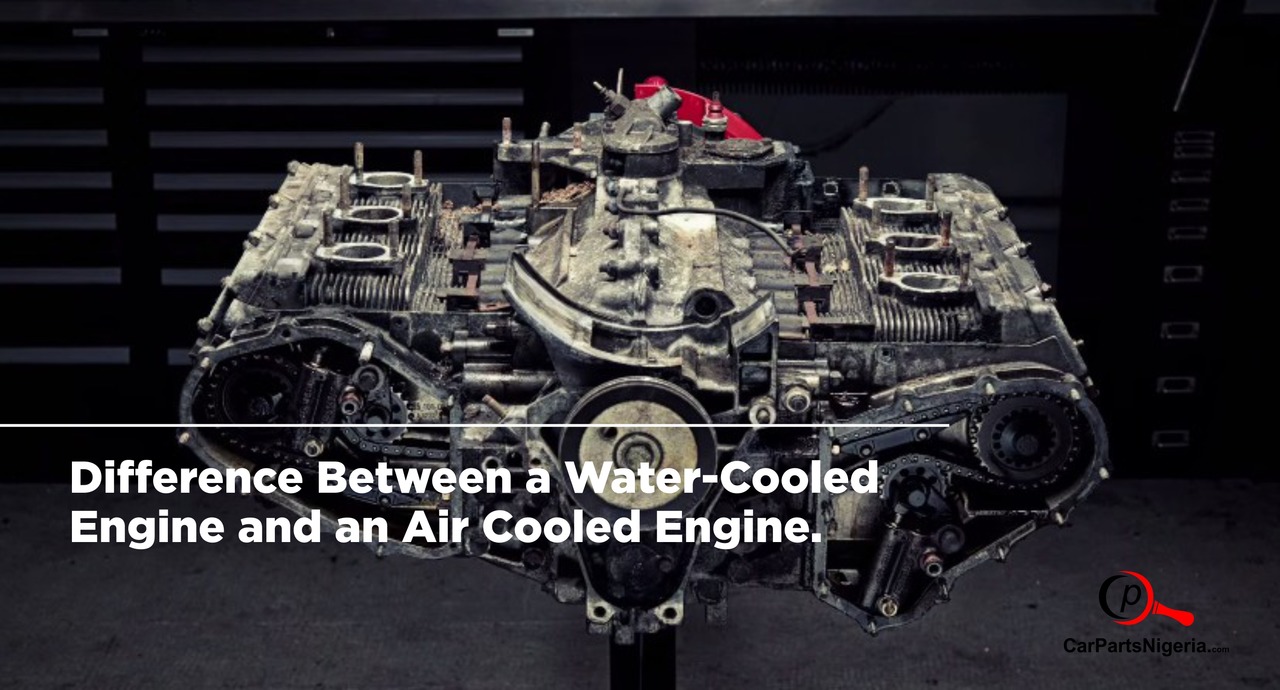Blog

Difference Between a Water-Cooled Engine and an Air-Cooled Engine
There are a few main differences between a water-cooled and air-cooled engine.
Air-cooled engines utilize an engine cylinder design that incorporates cooling fins all the way around the cylinder and on top of the piston cylinder head. These fins draw heat away from the cylinder and radiate away the heat. As the vehicle is being driven, the air is directed over the fins to dissipate even more heat. Some vehicles may incorporate a belt driven or electric fan to blow across the fins to assist in keeping the engine cool. Some engines use the hot air off of the engine to heat the interior of the passenger compartment. Engines that are cooled by air have a harder time maintaining a constant operating engine temperature. This can affect engine operation during colder conditions or extreme heat conditions.
Instead of fins used to keep the engine cool, in water-cooled engines the engine block and heads are cast solid but with internals passages throughout the engine block around the cylinders and over the cylinder in the cylinder head. The engine will utilize a water pump that is connected to these passages on the engine. The water pump can be driven by belt, gear or electric motor. The system has a radiator that is used to radiate the heat away from the water (coolant) that flows through the motor. A thermostat is put into a passageway from the engine to the radiator. The water or coolant temperature is maintained by the thermostat. The thermostat controls flow of coolant into the radiator. As the water pump is turned, the coolant is pumped through the engine. The coolant absorbs and transfers the engine’s heat from the combustion process. As the coolant gets heated, the thermostat will allow the flow to be restricted to the radiator until the coolant temperature reaches a set temperature of around 190 degrees at which time it opens the flow to the radiator. The coolant then flows into the radiator and the coolant heat is transferred to the radiator fins to be dissipated out to the surrounding air like the fins on the air-cooled engine. The radiator has electric or mechanical fans to blow air across the cooling fins. The thermostat opens and closes as needed to maintain a constant engine internal coolant temperature; engine temperature is controlled better that air cooled engines. The coolant can also be routed into the passenger compartment to flow through a small radiator called a heater core to heat the interior of the vehicle.
Some engines may use a hybrid design that uses a water-cooling system mixed with some of the air-cooled engine traits to help keep the engine cool and to lighten the added weight of a full-size water cooling system. These systems may use smaller radiators or thin lightweight radiators and engine designs that have air cooled areas to dissipate heat.
The advantages of air-cooled engines are that they are lighter without the use of radiators, water pumps, thermostats, coolant, or hoses. The disadvantages are that they cannot warm up fast and cannot maintain a constant engine temperature. This will affect engine performance and emissions in climate changes like extreme cold or hot temperatures. A cold engine requires added fuel to run properly.
The advantages of water-cooled engines are that they can warm up quickly and maintain the engine temperature better than the air-cooled design. This helps maintain engine performance and emissions. The disadvantages of a water-cooled engine is the added weight of the engine design along with added weight of the cooling system components like the radiator, water pump, coolant, and hoses.
Source (Yourmechanic).
Posted on November 2017,01 // Author: Admin